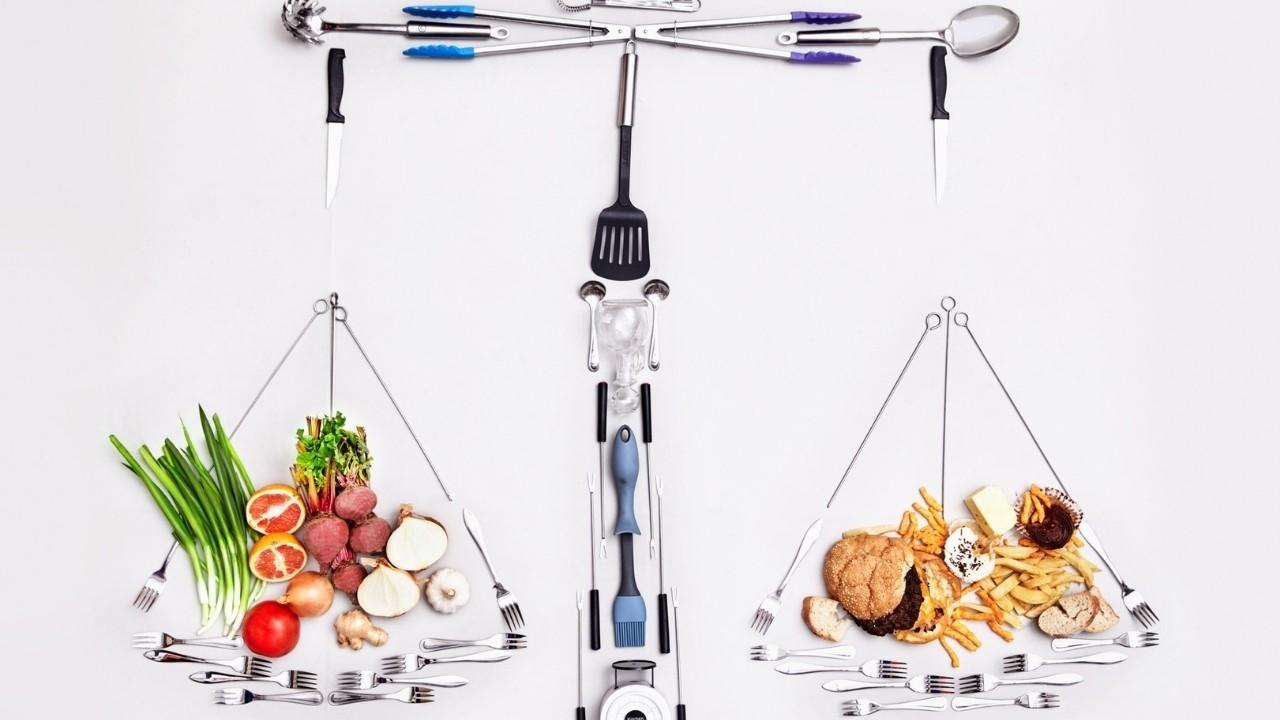Use this Scale to Crush Your Cravings

The foods you eat can set you up for cravings. Especially foods that measure high on this one thing.
One major quality of the food you eat can affect whether it triggers cravings or keeps you feeling satisfied.
It has to do with something called the Glycemic Index, which measures foods on a scale of 1-100 on how fast they raise your blood sugar levels.
The faster and higher the food makes your blood sugar go up, the higher its glycemic index number is.
This matters because when your blood sugar goes up, your body sends out hormones like insulin to help remove it. This can cause a blood sugar “crash” that makes you feel tired, shaky, and blah a little while after you eat it.
Plus, it can also bring on the “hangry” feeling … a combo of hungry and angry or anxious … which makes you want to eat MORE to bring your blood sugar level back up.
This is a cycle that’s really hard to break out of once your body gets used to it.
Over time, all those insulin surges can become linked with insulin resistance, which means your cells aren’t as receptive to insulin.
As you may know, insulin resistance is a major precursor for type 2 diabetes and other health issues like heart disease.
That’s one reason why it’s a good idea to eat foods that don’t cause big spikes in your blood sugar levels.
As an aside, did you know that there is a global epidemic of diabetes? The number of people with type 2 diabetes has risen almost 300% since 1980, with more than 400 million people now having the disease.
This is a huge major health issue - pretty scary, right? This is one of the reasons I do what I do.
So … back to the glycemic index! It mostly applies to foods that contain carbohydrates.
But it’s not that simple. Your blood sugar doesn’t just respond to the amount of carbohydrate or natural sugars in a food.
The amount of fiber, fat, and protein a food contains also plays a role, helping to slow down the blood sugar response.
Just as a quick example, corn flake cereal has a glycemic index of 81, while an apple has a glycemic index of 36.
The cereal is a processed food that’s basically a sugar delivery system! There’s very little fiber in it to help slow down its impact on your blood sugar.
But even though the apple contains natural sugar, it also contains fiber that helps slow down how quickly it makes your blood sugar level rise.
Plus, fiber helps keep you feeling full, which besides having health benefits, means it also can help you avoid cravings later.
Knowing where on the scale a food lies can help you make better decisions about what you’re eating.
Here's a link to a Glycemic Index Scale for you to check out your foods.
There are a few things you need to know about this scale:
The first … the glycemic index actually measures each food as if you were eating it alone, on an empty stomach. Most of us don’t do that when we eat! We eat a few different foods at the same time.
For instance, if you were to eat white rice, which has a high GI of 87, chances are you’d be eating something else with it … like some delicious beef and broccoli, which have a GI indexes of 0 and 10, respectively.
The second issue … your food is SO MUCH MORE than its impact on your blood sugar. It also contains vitamins, minerals, and other compounds your body needs.
Just as an illustration, highly processed peanut M&Ms, have a pretty low glycemic index of 33 … macaroni and cheese has an index of 64 … and baked potatoes, which are all-natural and packed with vitamins and minerals, come in at 85!
Also, portion sizes still definitely count if you’re trying to maintain or lose weight!
So what should you do?
We need to think about the overall GLYCEMIC LOAD of your meals.
By that I mean, if you are eating a food you know has a high glycemic index, something that is higher on the carb scale, how about balancing it out by also eating something with protein or healthy fat?
Like the rice, beef, and broccoli example I listed above.
Or, if you’re eating a high-glycemic fruit like grapes, which have a GI of 60, you can add some healthy fats like a handful of nuts to slow the blood sugar surge.
In fact, this is where the old-fashioned “square meal” comes into play!
Way before the glycemic index was ever invented, our grandparents and great-grandparents naturally balanced out the meals they served with a protein, starchy carb, and a veggie.
I hope this helped shed some light on the glycemic index and how you can use it to keep your blood sugar stable, and avoid that hangry feeling. You might even notice that you don’t feel as hungry as often!
If you need help with a meal plan or exercise program, click here to schedule a free consult!




